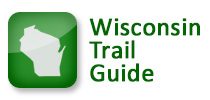Blisters, Wisconsin Trail Guide
Heading
Don't let blisters spoil a good walk.
Aside from the Ten Essentials, knowledge of proper blister care is a fundamental of hiking. A pleasant walk in the woods can quickly turn miserable if preventative and responsive measures are not taken to keep your feet happy. The leading causes of blisters are wet socks and boots that don't fit or have not been broken in.
Prevent hotspots before they occur. If you know you are likely to develop blisters in a certain area, wrap it with athletic tape or coat with a liquid bandage or second skin. Keep moisture away by sprinkling medicated foot powder on your feet before putting on your socks.
Stop at the first sign of a hotspot. Generally, hotspots appear as a reddish, tender spot and are a precursor to a blister. Dab the area with a little liquid bandage or apply second skin bandage to reduce the friction.
Change your socks. Always keep at least one dry pair of socks on hand so you can change your socks at the first sign of a hotspot. Moist socks create more friction in your sock and friction is the key ingredient in blister formation. Let your damp socks dry on the outside of your pack.
Treat blisters using donut-shaped pieces of moleskin. Stack them if you must to keep pressure off of the blister. A popped blister is more likely to develop an infection from the bacteria and humidity inside your boot.
Do not use duct tape. While some hikers tout duct tape as a cure for anything, the chemicals on the sticky side of the tape will trap in germs. When used over blisters, which are open wounds, duct tape may promote infection.
Source: American Hiking Society. Please visit the AHS Website for more information.

